Our masters
Józef Łepkowski (1826-1894)
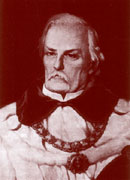
Professor of the Jagiellonian University, archaeologist, political journalist, and historian of art. In the late 1840s he made a pioneering attempt to record archeological relics in the Polish lands. He was the Jagiellonian University lecturer from 1865 to 1893. He contributed to the restoration of some key historic monuments of Kraków, including the Dominican Church and the Wawel Cathedral. He was the founder and the first head of the Archaeological Room, whose collection now belongs to the Jagiellonian University Museum. In 1875 he became head of the first Chair in Archaeology in Poland and served adsthe JU Rector during the years 1885-1886. He authored and published numerous works from the field of archaeology and the history of art.
Piotr Bieńkowski (1865-1925)
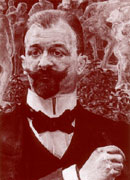
The Jagiellonian University professor, archaeologist who organized the first Chair in Classical Archaeology. He studied in Lvov, Vienna, Rome, and Berlin and participated in a research expedition to Lower Nubia (1910/11). He was a distinguished expert on Greek and Roman Sculpture, the author of more than 150 publications, the most important of which were about the image of Barbarian peoples in classical ancient art. He educated a number of eminent academics and was a member of several prestigious academic societies both in Poland and abroad.
Włodzimierz Demetrykiewicz (1859-1937)
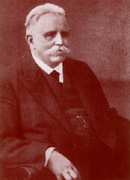
Archaeologist, organizer of research, restoration and museum projects. Professor of the Jagiellonian University. He successfully completed his habilitation procedure in 1905 and started to give lectures on prehistoric archaeology. He received professorial title in 1907. Professor Demetrykiewicz created an inventory of Galician hill-forts and wrote the first synthesis of Galician prehistory. He carried out numerous archaeological excavations and inspections and was the custodian of the Archaeological Museum in Kraków.
Tadeusz Smoleński (1884-1909)

The first Polish Egyptologist. He graduated in history and left for Egypt due to tuberculosis. Under the direction of Gaston Maspero he became a specialist in Egyptian archaeology and philology and published papers on these subjects. He translated the Westcar Papyrus into Polish (1907), participated in the Austro-Hungarian expedition to Sharuna-Gamhud and was the Secretary of the Organizational Committee of the Second International Congress of Classical Archaeology in Cairo in 1909. Some of Tadeusz Smoleński's findings were brought to Poland and are now exhibited in the Archaeological Museum in Kraków. Smoleński's career ended with his premature death at the age of 25.
Stanisław Jan Gąsiorowski (1897-1962)
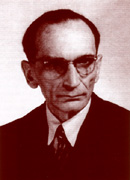
Classical archaeologist, historian of art and museologist. He was a pupil of P. Bieńkowski and took over the Chair in Classical Archaeology after his death. During the years 1942-1953 he was the director of the Czartoryski museum in Kraków. His doctoral thesis was on ancient and medieval miniature painting. He was a member of numerous Polish and foreign academic societies. On November 6, 1939 he was arrested by Nazi Germans and taken to a concentration camp. He was imprisoned in Sachsenhausen and then Dachau. After the World War II he lost his Chair and was expelled from the University due to the persecution by the Communist authorities of Poland. During the years 1955-1962 he headed one of the archaeological sections at the Polish Academy of Sciences. His publications were primarily focused on ancient Mediterranean arts and culture.
Kazimierz Bulas (1903-1970)
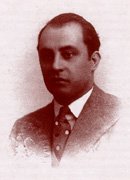
Classical archaeologist, philologist and historian, P. Bieńkowski's pupil. He graduated in archaeology in 1925 and gained a PhD degree in 1927, for his thesis on ancient illustrations to the Iliad. After studies in several foreign countries (Germany, Belgium, France, Belgium, Italy, and Turkey) and academic work at the Jagiellonian University he completed his habilitation procedure in 1935. He was an eminent expert on classical civilization, and especially on vase painting. Professor Bulas was a polyglot with good command of more than a dozen languages. He served as honorary consul of Greece (1932-1939) and belonged to about a dozen academic societies. On November 6, 1939 he was arrested by Nazi Germans and taken to a concentration camp. He was imprisoned in Sachsenhausen and then in Dachau. After the World War II he occupied academic posts in Toruń and in Rome. Since 1951 he lived and worked in Houston USA (at a university library), where he worked on the "Great Polish-English and English-Polish dictionary", published 1959-61.
Józef Żurowski (1892-1936)
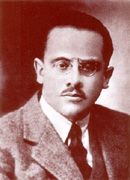
He graduated in prehistory from the Jagiellonian University in 1915 and gained a PhD degree in 1922. In 1928 he successfully completed his habilitation procedure and became an academic teacher. He carried out a number of excavation and search expeditions, which resulted in obtaining many valuable relics for the Archaeological Museums in Kraków and in Warsaw. As an archaeological curator, he registered and recorded the most important archaeological sites of the Małopolska region. He was an author of many publications.
Tadeusz Sulimirski (1898-1983)
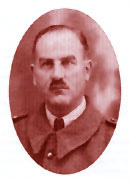
He graduated in law from the University of Lvov in 1924. In 1929 he gained a PhD in prehistory and successfully completed his habilitation procedure in 1931. In 1936 he took over the Chair in Prehistoric Archaeology at the Jagiellonian University, and soon gained a professorial title. During the World War II he stayed in England, where he engaged in military and political activities of the Polish government in-exile. After the War he stayed abroad, where he continued his academic work. His research interests focused on nomads, Lusatian culture, and intercultural contacts during the Neolithic and the Bronze Age.
Rudolf Jamka (1906-1972)

He graduated in prehistory from the Jagiellonian University in 1930 and gained a PhD degree in 1932. He was a pupil of Demetrykiewicz and Żurowski. Rudolf Jamka founded the JU Academic Society of Prehistory Students. During the Nazi German occupation he gave secret archaeology lectures. After the World War II he headed the Chair in Prehistoric Archaeology and then, in 1971, became the first head of the JU Institute of Archaeology. He specialized in Bronze Age, the Roman Influence period and the Middle Ages and was the author of numerous publications on these subjects.
Maria Ludwika Bernhard (1908-1998)

Classical archaeologist, historian of art and museologist. A pupil of K. Michałowski of the University of Warsaw. She initially worked in Warsaw and took part in the Warsaw Uprising of 1944. In 1954 she was appointed to the JU Chair in Mediterranean Archaeology and gained a professorial title in 1957. She educated several generations of students and researchers. She participated in and led excavations at a number of sites, including Myrmekion, Palmyra, Kalos Limen, and Alexandria. She was an eminent expert in the field of Greek art and archaeology, especially ceramics and vase paintings, and the author of many publications on these topics. Professor Bernhard belonged to many Polish and international academic societies and was the head of the Academic Council of the Mediterranean Archaeology Department at the Polish Academy of Sciences in Warsaw.
Olga Hirsch-Dyczek (1936-1993)
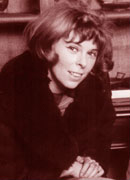
Classical archaeologist, one of M.L. Bernhard's first pupils. She was an academic staff member of the Jagiellonian University from 1962 to 1993. She gained a PhD degree for her thesis on the question of Greek originals in classical sculptures from Kraków collections. From 1965 to 1966 she participated in the excavations in Palmyra, Tell Atrib, and Alexandria. Olga Hirsch Dyczek was an expert in the field of classical sculptures from Polish collections, also interested in the history of Polish archaeology and collections and was an author of publications on these subjects.
Kazimierz Godłowski (1934-1995)

Archaeologist and prehistorian, a Jagiellonian University professor. He studied archaeology at the Jagiellonian Universtity and was a staff member of the JU Institute of Archaeology from 1971 on. He gained a professorial title in 1983 and was the head of the Institute during the years 1976-1991. He was the member of the Polish Academy of Arts and Sciences and many other Polish and foreign academic societies. From 1992 on, he was the co-publisher of the series Monumenta Archaeologica Barbarica.
He carried out excavations in Jakuszowice, Kryspinów, Opatów, and at other sites. His areas of interest included chronology of the Roman period, the Migration Period in East Europe, the Przeworsk culture, the ethnic situation in Europe during the La Tène period and the Roman influence period as well as the origins of Slavs (he consequently criticized the dominating theories of Slavs originating from Poland and argued that their first homeland was in eastern Europe). He was an author of numerous publications on these subjects.
Wybitny polski archeolog, specjalista archeologii epoki brązu. Wykładowca UJ i mistrz dla wielu pokoleń archeologów. W 1955 ukończył studia na Uniwersytecie Jagiellońskim, w 196o uzyskał stopień doktora, a w 1966 doktora habilitowanego. W 1976 roku uzyskał tytuł profesora nadzwyczajnego, a w 1983 profesora zwyczajnego. W latach 1971-1985 kierownik Zakładu Archeologii Polski (1971-1985), 1973-1984 kierownik podyplomowego Studium Muzeologicznego UJ, 1981-1987 zastępca dyrektora Instytutu Archeologii UJ, od 1985 kierownik Zakładu Archeologii Epoki Brązu Instytutu Archeologii UJ.
Był członkiem i wiceprzewodniczącym Komitetu Nauk Pra- i Protohistorycznych PAN oraz członkiem Wydziału II Historyczno-Filozoficznego PAU, członkiem-korespondentem PAU (od 1992 r.), członkiem Niemieckiego Instytutu Archeologicznego.
Zmarł 26 września 2014. Pochowany został 2 października na Cmentarzu Rakowickim w Krakowie.
Prof. dr hab. Piotr Kaczanowski był związany z Uniwersytetem Jagiellońskim od roku 1967, od początków swej kariery naukowej. Pracował najpierw w Katedrze Archeologii Polski, a następnie w Instytucie Archeologii UJ, kolejno na etacie asystenta, starszego asystenta i adiunkta. Uzyskał habilitację na podstawie rozprawy "Importy broni rzymskiej na obszarze europejskiego Barbaricum". W roku 2001 otrzymał stanowisko profesora nadzwyczajnego, natomiast w roku 2002 uzyskał tytuł profesora.
W latach 1994-1996 pełnił funkcję pełnomocnika Dziekana Wydziału Historycznego ds. finansów, w ciągu następnych trzech lat funkcję prodziekana, a w latach 1999 do 2005 sprawował funkcję Dziekana Wydziału Historycznego UJ. Od roku 1996 kierował Zakładem Archeologii Epoki Żelaza IA UJ.
Specjalista w zakresie młodszego okresu przedrzymskim, okresu wpływów rzymskich wraz z wczesną fazą okresu wędrówek ludów na obszarach środkowo- i północnoeuropejskiego Barbaricum. Jego zainteresowania badawcze obejmowały m.in. problematykę uzbrojenia ludności środkowej i północnej Europy w okresie rzymskim, powiązania tych terenów z państwem rzymskim, relacje kulturowe w okresie rzymskim, zagadnienia związane z osadnictwem okresu przedrzymskiego i rzymskiego. Prowadził i brał udział w badaniach na wielu stanowiskach w Polsce, Niemczech, Skandynawii i na Bałkanach. Autor około stu publikacji oraz 3 książek.
Ważniejsze publikacje: „Drochlin. Ciałopalne cmentarzysko kultury przeworskiej z okresu wpływów rzymskich" (1987), „Importy broni rzymskiej na obszarze europejskiego Barbaricum" (1992), „Klasyfikacja grotów broni drzewcowej kultury przeworskiej z okresu rzymskiego" (1995), „Najdawniejsze dzieje ziem polskich (do VII wieku). Wielka Historia Polski, t. I [współautor] (1998), „Prehistoria. Encyklopedia Historyczna świata I (współautor) (1999), „Tabula Imperii Romani (M- 34, Kraków) (współautor) (2002).
More information
Złota Księga – Wydział Historyczny Uniwersutetu Jagiellońskiego. 600-lecie odnowienia Akademii Krakowskiej, ed. Julian Dybiec, Kraków 2000.
